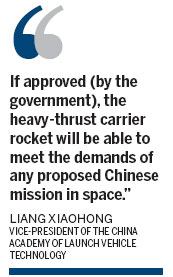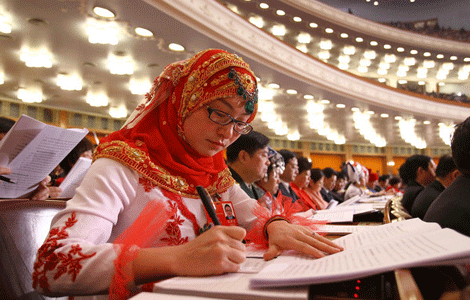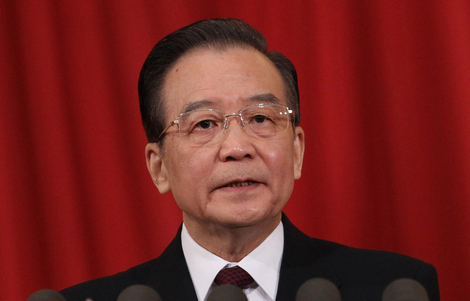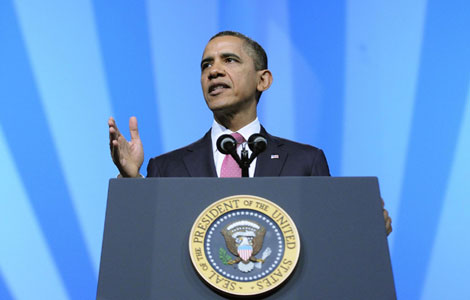 |
|
|
|
|||||||||
New heavy-duty launch carrier will help China put men on the moon
BEIJING - Scientists have finished preliminary research into a heavy-thrust carrier rocket that could help China send men to the moon and fly to deep space in the future, said Liang Xiaohong, vice-president of the China Academy of Launch Vehicle Technology.
"If approved (by the government), the heavy-thrust carrier rocket will be able to meet the demands of any proposed Chinese mission in space," said Liang, who is also a member of the National Committee of the 11th Chinese People's Political Consultative Conference.
|
 |
After about two years of research and argument, scientists agreed that China's future heavy-lift carrier rocket should have a lift-off thrust of 3,000 metric tons and be able to send a payload of 100 metric tons into the low-Earth orbit. Liang declined to give more details.
The behemoth launcher will be much more powerful than China's current largest launcher, Long March 5, which is designed with a lift-off thrust of 1,000 metric tons that enables it to send a maximum payload of 25 metric tons to the low-Earth orbit and a payload of 10 tons to the higher geo-stationary orbit.
"China lagged more than 10 years behind the United States, Russia and Europe in the development of large-thrust launchers, and should not repeat the mistake in heavy-thrust launchers," he said.
The academy proposed in 1986 to develop a large-thrust launcher, but it was not approved until 2006.
Now, major space powers are pulling their resources together to develop new heavy-thrust rockets.
According to media reports, NASA in September unveiled the design of a new rocket that could lift up to 130 metric tons. Its retired Saturn V rocket that powered the Apollo moon exploration program could lift 120 metric tons.
And Russia is also developing a heavy-thrust launcher that could lift up to 110 metric tons.
"China should not miss out on these developments again, given its current economic and scientific strength," he said.
China is also researching how to use the boosters and the first two stages of a launch vehicle repeatedly, which could help reduce the launch cost, he said.
China's Long March rockets currently in service are the Long March 1 to 4 series. Aiming to boost capacity, the country is developing a new family of launch vehicles, including Long March 5 to 7.
Liang said that so far, China has made key technological progress in developing a Long March 5 large-thrust carrier rocket. It is hoped that the new generation of rocket will make its maiden flight in 2014.
Engineers and scientists have succeeded in developing the first hydrogen box that will be used to store fuel for the Long March 5 rocket.
He said production of the rocket's key parts will be completed this year.
The Long March 5 rocket will more than triple Chinese rockets' carrying capacity in outer space. Using non-toxic and pollution-free propellant, the 60-meter-long rocket will be equipped with four propellers, with each measuring 3.35 meters in diameter, he said.
Meanwhile, the Long March 7 carrier rocket, with a launch capacity of 13.5 metric tons in low-Earth orbit and 5.5 metric tons in sun-synchronous orbit, is expected to take its maiden flight within five years.
"The Long March 7 will be able to carry cargo spacecraft for China's future space station program and fulfill the long-term needs of the country's manned space program," he said.
China plans to establish its own space lab around 2016 and a manned space station around 2020, the Xinhua News Agency reported.
Liang said he expects the new generation of carrier rockets to phase out some of China's in-service rockets and handle the bulk of China's space missions in five years.
Wu Ying, iPad, Jeremy Lin, Valentine's Day, Real Name, Whitney Houston, Syria,Iranian issue, Sanyan tourism, Giving birth in Hong Kong, Cadmium spill, housing policy

|

|

|

|

|

|